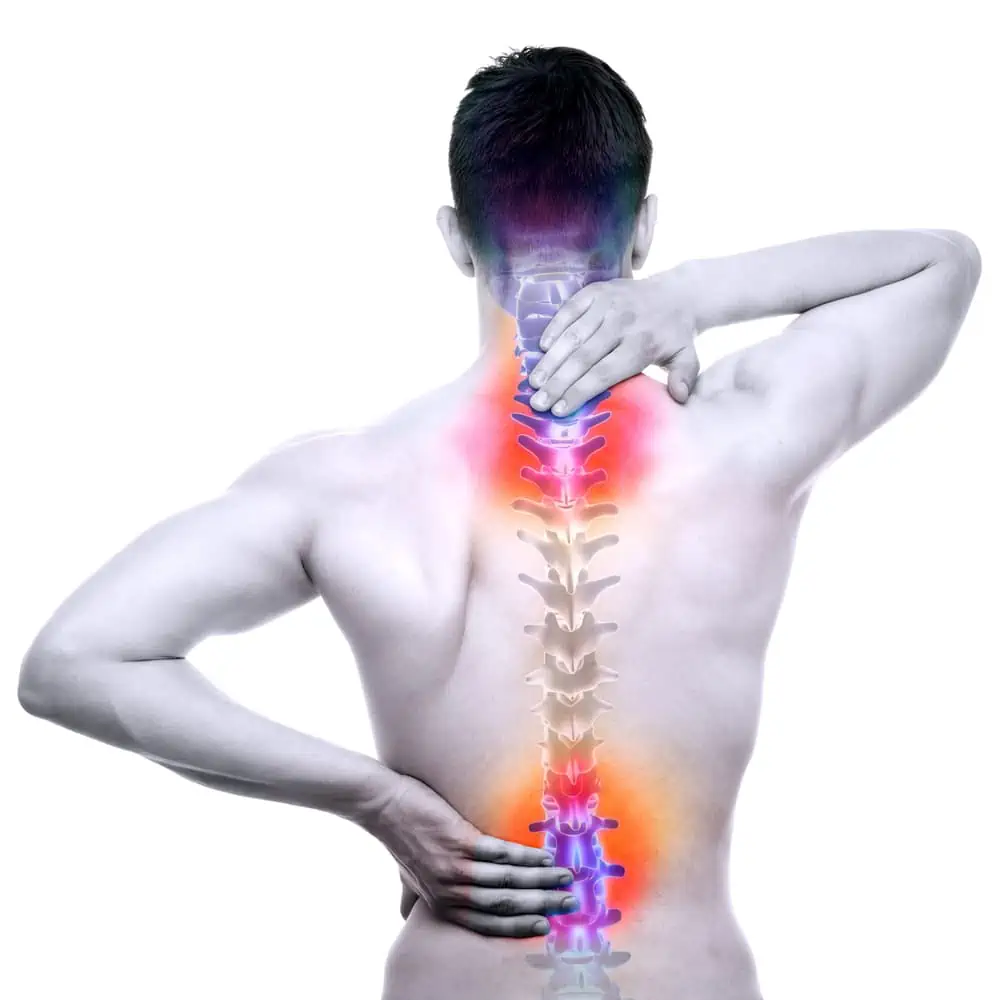The search for nonpharmacological treatments for pain is on. Seemingly every day there are new promoters popping up, touting the benefits of one exercise or one herbal supplement that can cure all your ills – a modern-day snake oil, if you will. One such thing that’s often put forth as a be-all and end-all for pain is yoga. But what’s the truth behind these claims – and can it really be a useful avenue for the chronic pain population? Let’s find out.
Elements of Yoga
One of the main draws of yoga is that it is comprised of more than one component, since it incorporates physical postures, breathing techniques and relaxation/meditation elements.[1] There are many different kinds of yoga, each incorporating different poses, breathing and relaxation styles, but all rely on the interplay between these core elements.
The physical aspects of yoga are meant to increase strength, coordination and flexibility, while the breathing and meditation aim to help practitioners develop greater awareness and lessen anxiety. These mind and body aspects, when combined are meant to confer a greater quality of life.[2]
National Usage
According to the National Institutes of Health (NIH), “Pain is one of the leading reasons Americans turn to complementary health approaches, such as yoga, massage, and meditation — which may help manage pain and other symptoms that are not consistently addressed by prescription drugs and other conventional treatments.”[3]
The use of yoga for pain relief (along with tai chi and qi gong) is the third most common complementary modality used by American adults to treat pain (behind nonvitamin dietary supplements and deep-breathing exercises), but its use is growing. In 2002, only 5.1% of people practiced yoga. By 2012, that number had almost doubled, with 9.5% of people utilizing it.[4] This increase held especially true for the younger generation (age 18-44).
Proven Benefits
It’s been found that yoga can, in fact, be beneficial for certain types of pain. An analysis of eight randomized controlled trials on the benefits of yoga for Back Pain and Lower Back Pain, for instance, found that yoga helped improve pain and functional disability by a medium to large degree.[1] Furthermore, the type of yoga practiced within the study had no effect on the outcome; they all seemed to produce benefits in terms of pain and function, suggesting (although more research is needed) that the poses themselves don’t matter as much as the interplay between the postures, breathing and relaxation.
Another such analysis of yoga for pain took into consideration a myriad of pain conditions, from low back pain and rheumatoid arthritis to headaches/migraines and renal disease.[2] All studies that were evaluated indicated a positive effect in favor of the yoga interventions; however, this effect was greater for back pain when compared with other conditions.
Reasons for the Success
There are several theories as to how and why yoga confers such benefits. It could be that yoga’s physical poses result in increased core strength and stabilization, which are good for the back. It could also help by slowly getting pain patients to move again, overcoming their fears of making the pain worse through physical exertion.[1] Moving, in turn, helps reduce stiffness by lubricating the joints and can also promote weight loss.
Catherine Bushnell, the scientific director of the National Center for Complementary and Integrative Health (NCCIH) at the U.S. National Institutes of Health (NIH) believes it goes further than that, though. Chronic pain affects the brain, causing emotional problems and impaired cognitive abilities, most likely through a reduction in gray matter. Yoga, Bushnell has found, has the opposite effect, bulking up gray matter and strengthening white matter connectivity, thus counteracting the effects of chronic pain on the brain.[5] This, in turn, leads to an increase in pain tolerance, says Bushnell.
Drawbacks
Nonetheless, yoga has its drawbacks. Its positive effects on pain and functional disability have been shown to fade over time, conferring only a small benefit a few months after cessation – meaning a sustained commitment to the exercise is necessary.[1] But another study found that enthusiasm for yoga often fades over time, meaning it’s unlikely that participants will sustain an effective level of participation.[2]
Additionally, more research is needed into which conditions may actually be improved by yoga. Some studies, for instance, have found support for its use for rheumatoid arthritis,[2] while others have found little to no effect on pain and disability for RA.[6] Furthermore, for some people – like those with high blood pressure, glaucoma, sciatica or women who are pregnant – the NIH recommends modifying or avoiding various yoga poses – meaning they may not receive the same level of pain-relieving benefits as others. [7]
Going Further
“Chronic pain is not exclusively a physical condition, but a complex syndrome including physical, psychological and social processes,” concludes a review in The Journal of Pain.[2] “With respect to the multifaceted causes, there is need for interdisciplinary procedures in diagnosis and pain management.” While yoga can be utilized as one facet of the treatment for pain, more are usually required.
That’s where pain management comes in. With the help of a pain management provider, who can effectively coordinate interventional procedures and complementary alternative treatments, like yoga, the various causes and effects of pain can be addressed in an efficient and methodical manner, meaning more effective pain relief and a quicker return to doing the things you love.
References
[1] Beggs, R. Thomas, and Susan Holtzman. “Yoga for Chronic Low-Back Pain: A Meta-Analysis of Randomized Controlled Trials.” Pain Research and Management 18, no. 5 (September/October 2013): 267-72.
[2] Büssing, Arndt, Thomas Ostermann, Rainer Lüdtke, and Andreas Michalsen. “Effects of Yoga Interventions on Pain and Pain-Associated Disability: A Meta-Analysis.” The Journal of Pain 13, no. 1 (January 2012): 1-9.
[3] “NIH Analysis Shows Americans Are in Pain.” National Institutes of Health (NIH). August 11, 2015. Accessed May 19, 2016. https://www.nih.gov/news-events/news-releases/nih-analysis-shows-americans-are-pain.
[4] Clarke, Tainya C., Lindsey I. Black, Barbara J. Stussman, Patricia M. Barnes, and Richard L. Nahin. “Trends in the Use of Complementary Health Approaches Among Adults: United States, 2002-2012.” National Health Statistics Reports 79 (February 10, 2015).
[5] Bergland, Christopher. “How Does Yoga Relieve Chronic Pain?” Psychology Today. May 27, 2015. Accessed May 23, 2016. https://www.psychologytoday.com/blog/the-athletes-way/201505/how-does-yoga-relieve-chronic-pain.
[6] Cramer, H., R. Lauche, J. Langhorst, and G. Dobos. “Yoga for Rheumatic Diseases: A Systematic Review.” Rheumatology 52, no. 11 (November 2013): 2025-030.
[7] “Yoga: In Depth.” NCCIH. June 2013. Accessed May 24, 2016. https://nccih.nih.gov/health/yoga/introduction.htm.












